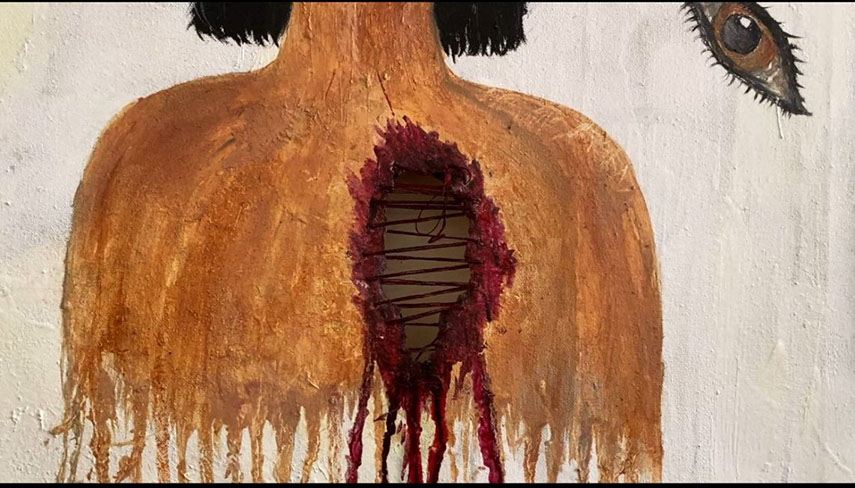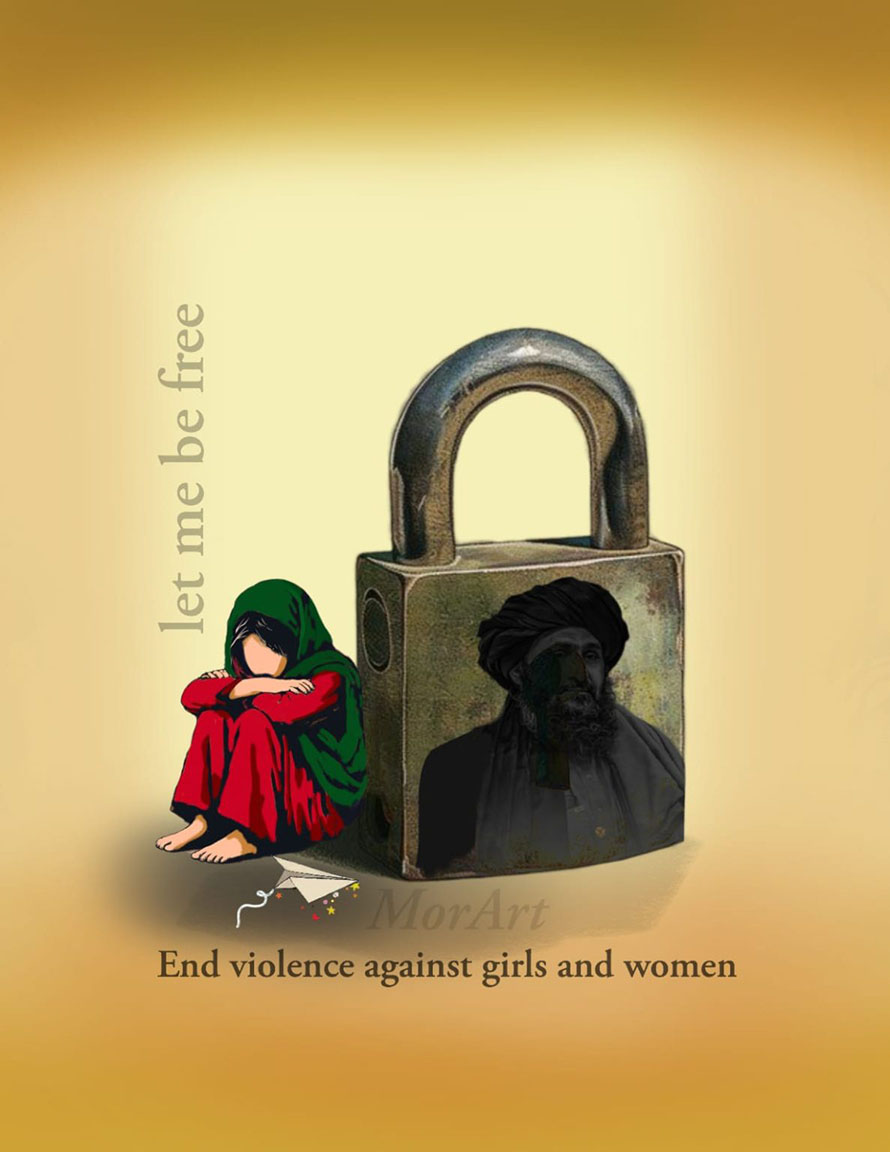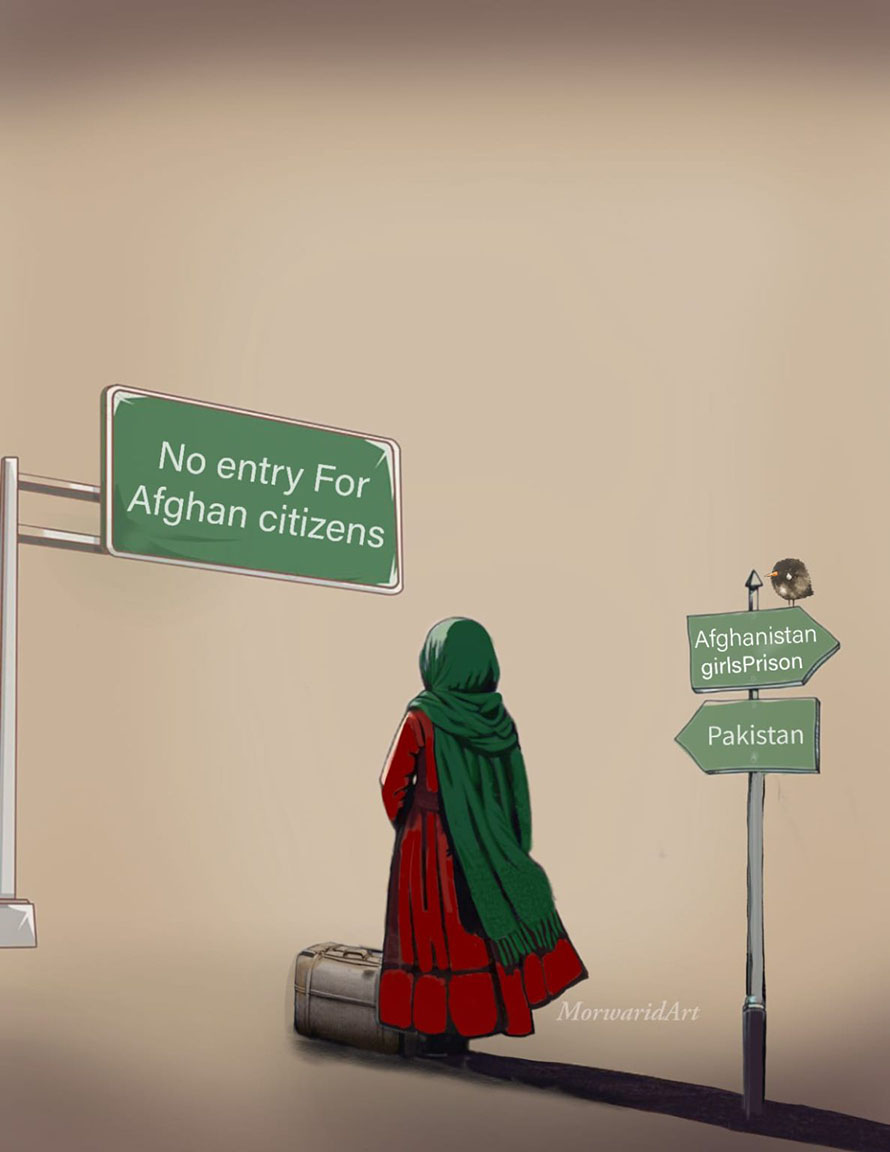Several female painters say they strive to use their art as a voice of protest and a means to narrate the pain and resilience of women. They add that with every color and stroke, they depict the stories of women who fight for light amidst the darkness and under the shadow of the Taliban’s escalating restrictions. These painters emphasize that while a single canvas cannot change the Taliban’s policies, each hue is a step toward keeping women’s voices alive.
Some of these painters state that they display most of their works on social media with the aim of raising global awareness about the situation of women in Afghanistan. These young artists hope that by sharing their works online, they can create a space for solidarity and resistance in the pursuit of restoring women’s rights.
Amna Yousufi, one of the painters, says her professional journey gained meaning when the Taliban seized control of Afghanistan, worsening the country’s political and social conditions. She adds, “Art knows no boundaries; from Afghanistan to America, it can captivate, move, and evoke empathy and support. Art can etch the pain of a mother, the silence of a girl, and the resilience of a woman into the viewer’s mind. Sometimes, a single image can scream louder than a thousand sentences.”

Murwarid Bahar, another painter, uses social media and digital art to amplify the silent cries of millions of women whose rights have been ignored. Her works, which reflect themes such as forced marriages, restrictions on education, work, movement, and even women’s clothing, have been showcased in exhibitions in Denmark, York University in Canada, France, and Pakistan’s National Council.

This painter says, “Today, art is officially banned in Afghanistan. The current rulers [the Taliban] consider any form of artistic activity, especially painting, illustration, and depicting faces, a crime. If someone paints a face or creates artwork within this regime’s framework, they face the risk of imprisonment, punishment, or even death.”

Murwarid strives to portray Afghanistan’s culture, the art of various ethnic groups such as Pashtuns, Hazaras, and Tajiks, as well as children and the country’s natural beauty in her works. According to Murwarid, her goal is to preserve Afghanistan’s cultural identity, especially at a time when many values are at risk of being forgotten.
Deba, too, with brush and color in hand, narrates the pain and suffering of women amidst the Taliban’s repressive restrictions. She says her paintings are not merely reflections of suffering and oppression but also embodiments of the resilience, beauty, and hope that women and girls in Afghanistan continue to hold in their hearts despite the pressures.

This painter says, “When I look at the Taliban’s restrictions, I sometimes wonder if it’s truly possible to express all this injustice. Even art sometimes feels powerless in the face of such immense pain, this density of silence and humiliation. Yet, it is precisely there that the true power of art begins—where words fall silent, but colors can still scream.” Having experienced the bitter threat of the Taliban, she says art is a balm for Afghanistan’s wounds.
Since the Taliban’s return to power in Afghanistan, now approaching four years, women have been deprived of education, study, work, travel, recreation, sports, and their most basic rights. Yet, amid this suffocating and repressive environment, some women stand firm—women who, despite exhausting pressures and restrictions, strive to find ways to resist, sustain their lives, and reclaim their individual and collective identities.
These women and girls have turned to painting at a time when the Taliban have banned photography and painting of living beings in the country. According to the Taliban’s Ministry for the Propagation of Virtue and Prevention of Vice, any form of depicting living beings is prohibited.
To enforce this law, the Taliban have resorted to widespread suppression of artists, confiscation of artworks, and threats and arrests. In such a stifling atmosphere, painting on canvas for these women is not only an artistic endeavor but also a courageous act of expressing identity, protest, and keeping the silenced voices alive.
You can read the Persian version of this report here:
رنگهایی علیه خاموشی؛ فریاد زن بر بوم ممنوعه طالبان
This post was originally published on this site be sure to check out more of their content








